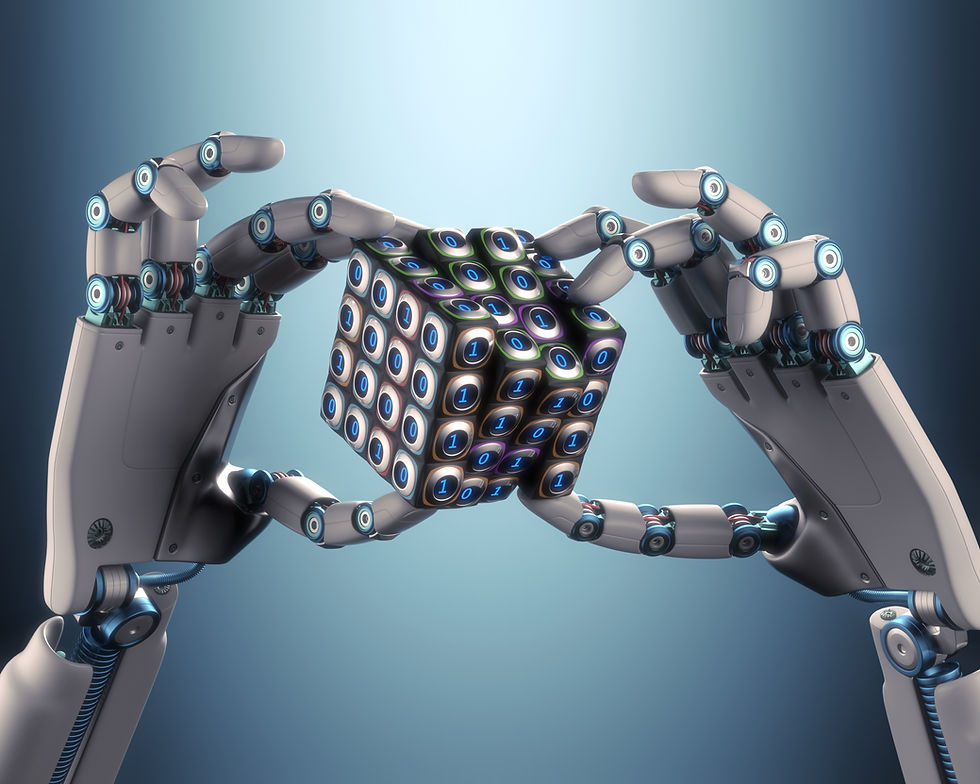Harnessing Artificial Intelligence as a Transformative Tool for Designers Insights from History to Modern Practice
- Jean Banzhoff

- Sep 29
- 4 min read
AI as a Transformative Tool for Designers
Harnessing Artificial Intelligence in Design—Insights from History and Practice

Introduction
Artificial intelligence (AI) is rapidly reshaping the landscape of design, presenting both remarkable opportunities and challenges. While some speculate about AI replacing creative professionals, the reality is far more compelling: AI is emerging as a vital resource that empowers designers, fosters innovation, and streamline processes. However, as with every technological revolution, adapting to change requires resilience and an open mind. By reflecting on pivotal moments such as the transition from film to digital photography and the Industrial Revolution, we can better understand how the profession continues to evolve. In this article, I will examine the role of AI as an indispensable tool for designers, its broader implications, and my own experiences integrating AI into my practice.
Lessons from Technological Shifts
Throughout history, major innovations have often been met with apprehension. The shift from film to digital photography, for example, was initially perceived as a threat to established creative practices. Many valued the tactile artistry of film and worried that digital processes would undermine their craft. Over time, however, digital technology expanded creative possibilities and redefined the standards of visual expression.
Similarly, the Industrial Revolution marked a profound transformation in the world of work and production. Although the transition was demanding, those who adopted new tools and methodologies found themselves at the forefront of progress. These historical precedents illustrate that adapting to innovation, though challenging, is fundamental to professional and creative growth.
Personal Reflections: Integrating AI into My Design Workflow
My own journey with artificial intelligence is a testament to the broader theme of adaptation and opportunity within the design profession. By incorporating AI into my workflow, I have streamlined the process of generating initial concepts and refining compositions. This integration has given me greater efficiency while also providing valuable insights into user preferences and behaviors. In my experience, AI functions as an extension of my creative vision, enhancing my capabilities and supporting my design decisions, rather than replacing the essential expertise that defines my work.
With AI as a partner in my practice, I can devote more attention to conceptual development and make better-informed design choices. AI also facilitates thorough research, enabling me to dig deeper into design challenges and potential solutions. Beyond ideation and strategy, AI has played a crucial role in helping ensure that my designs are accessible; it assists me in adhering to established guidelines and best practices. Through this collaborative dynamic, AI does not diminish the importance of foundational design skills. Instead, it amplifies my ability to create inclusive, well-researched, and thoughtfully crafted design solutions.
AI as a Creative Partner
AI tools support designers by generating new perspectives and suggesting creative directions. Whether proposing alternative color palettes, visualizing potential layouts, or offering reference concepts, these technologies enhance the ideation process. It is crucial to note that AI does not supplant the designer’s role; rather, it provides a platform for innovation and refinement, allowing the designer’s unique sensibility to guide the final output.
Driving Efficiency and Productivity
AI enables designers to optimize their workflow by handling routine operations, which in turn accelerates project delivery and elevates the quality of creative work. By automating foundational tasks, designers are empowered to engage fully with high-level strategy and craft, resulting in more impactful and thoughtful outcomes.
Personalization and Data-Driven Design
Another significant advantage of AI is its capacity to analyze user data and identify emerging patterns. By applying these insights, designers can tailor experiences to specific audiences, ensuring that their work resonates on a more personal and meaningful level. This data-driven approach enhances both the effectiveness and relevance of design solutions.
Facilitating Collaboration and Innovation
AI is also transforming collaboration within design teams and across stakeholder groups. These platforms can synthesize feedback, visualize multiple iterations, and anticipate user interactions, thereby supporting a more dynamic and inclusive creative process. This fosters an environment where collaboration and ideation thrive.
Ethical Considerations and the Human Touch
Despite the transformative potential of AI, designers must remain vigilant in upholding ethical standards, cultural sensitivity, and originality. Human judgment and expertise are essential to ensure that technology serves as a force for creative advancement rather than a substitute for thoughtful design. By integrating AI responsibly, designers can safeguard the integrity of their work.
The Future—Designers Empowered by AI
As AI continues to evolve, it will become an even more indispensable partner in the creative process. Designers who embrace this technology stand to benefit from newfound efficiencies, expanded creative possibilities, and deeper insights. History demonstrates that those willing to adapt and lead through change are best positioned to shape the future of the discipline.
Conclusion
Artificial intelligence plays a pivotal role in redefining design, much as past technological revolutions have done. By adopting AI as a strategic tool, designers can enhance productivity, achieve greater personalization, and unlock new realms of creativity. The true measure of progress lies in thoughtfully integrating AI into extending human imagination and expertise, championing innovation while remaining rooted in the timeless principles of design.

Comments